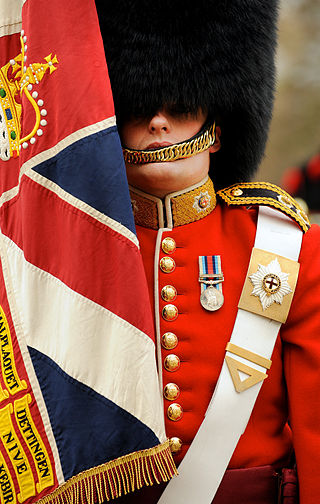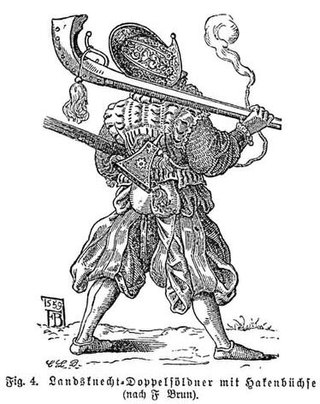Duplarius (pl.: duplares), duplicarius or dupliciarius was an inferior, low-ranking Roman officer, who received double rations or increased payment valuing the 2nd ration based on their valor. [1] [2] As part of cavalry, one decurio , one duplicarius, and one sesquiplarius was assigned to one turma . [2] Each duplarius as part of a turma was allowed to have two horses. [2] Golden-badged duplares were named Torquati duplares. [2]
Monica and Friends, previously published as Monica's Gang in Anglophone territories, is a Brazilian comic book series and media franchise created by Mauricio de Sousa.

Maurício Araújo de Sousa is a Brazilian cartoonist and businessman who has created over 200 characters for his popular series of children's comic books named "Turma da Mônica" or "Monica's Gang".

A signifer was a standard bearer of the Roman legions. He carried a signum (standard) for a cohort or century. Each century had a signifer so there were 60 in a legion. Within each cohort, the first century's signifer would be the senior one. The -fer in signifer comes from ferre, the Latin for 'to bear' or 'to carry'.

A standard-bearer, also known as a colour-bearer or flag-bearer, is a person who bears an emblem known as a standard or military colours, i.e. either a type of flag or an inflexible but mobile image, which is used as a formal, visual symbol of a state, prince, military unit, etc. This can either be an occasional duty, often seen as an honour, or a permanent charge ; the second type has even led in certain cases to this task being reflected in official rank titles such as Ensign, Cornet, Fähnrich and Alferes/Alférez.

An optio, was a position in a centuria (century) of a Roman army similar to that of an executive officer. The main function of an optio was as an optio centuriae, the second-in-command of a century, although there were many other roles an optio could adopt.

Doppelsöldner were Landsknechte in 16th-century Germany who volunteered to fight in the front line, taking on extra risk, in exchange for double payment. The stated ratio was that one Landsknecht in four would be a Doppelsöldner. The Doppelsöldner of each company were usually issued with ranged weapons, such as a crossbow or an arquebus, and arranged in the wings of a square, in front of the pikemen.
A decurion was a Roman cavalry officer in command of a squadron (turma) of cavalrymen in the Roman army.

Tiberius Claudius Maximus was a cavalryman in the Imperial Roman army who served in the Roman legions and Auxilia under the emperors Domitian and Trajan in the period AD 85–117. He is noted for presenting Trajan with the head of Dacian king Decebalus, who had committed suicide after being surrounded by Roman cavalry at the end of Dacian Wars.
Lionel's Kingdom is a Brazilian comic strip created in 1961 and part of the Monica's Gang comic strips.

Monica is a Brazilian fictional character and Mauricio de Sousa's best-known creation. Introduced in 1963, she serves as the main protagonist and title character of the Monica and Friends comic book series and media franchise.

Blu (Bidu) is a character in the Brazilian comic strip Monica's Gang, created in 1959. He was the first character created by Maurício de Sousa, along with his owner Franklin (Franjinha). The character appears in the logo and is the mascot of Mauricio de Sousa Produções, the company founded by Sousa to release his works.
A turma, was a cavalry unit in the Roman army of the Republic and Empire. In the Byzantine Empire, it became applied to the larger, regiment-sized military-administrative divisions of a thema. The word is often translated as "squadron" but so is the term ala, a unit that was made up of several turmae.

Mărtinești is a commune in Hunedoara County, Transylvania, Romania. It is composed of seven villages: Dâncu Mare (Nagydenk), Dâncu Mic (Kisdenk), Jeledinți (Lozsád), Măgura (Magura), Mărtinești, Tămășasa (Tamáspatak), and Turmaș (Tormás).

Arcobara was a fort in the Roman province of Dacia in the 2nd and 3rd centuries AD. It was unearthed in the village Ilişua in 1978. The fort was edified by Ala I Tungrorum Frontoniana. On the site a significant number of ballista projectiles were discovered: 27 stone projectiles having diameter between 7 and 13.5 cm and weigh up to 2 kg. The artillery was used as defensive, probably located in the fort's towers. These artifacts indicates the presence of ballistarii in this fort.
Arcobara was a Dacian town mentioned by Ptolemy.
The Bronze of Ascoli was a bronze tablet discovered in Asculum (Ascoli), Rome in 1908, which became notable for the study of the ancient Iberian language, because it contained the names of Iberian horsemen of the Turma Salluitana, who received Roman citizenship in 89 BCE after their participation in the siege of Asculum.

Monica and Friends: Bonds is a 2019 Brazilian family adventure film produced by Estúdios Mauricio de Sousa, directed by Daniel Rezende, with screenplay written by Thiago Dottori, and starring Giulia Benite, Kevin Vechiatto, Laura Rauseo and Gabriel Moreira. The film was based on the eponymous graphic novel by Vitor and Lu Cafaggi and the series of homonymous comic books created by Mauricio de Sousa. The movie was first released in US during the Hollywood Brazilian Film Festival, on 16 November 2019.
Sesquiplarius, plural sesquiplares, was an inferior, low-ranking Roman officer, who received a ration and a half or increased payment valuing the additional ration based on their valor. As part of cavalry, one decurio, one duplicarius, and one sesquiplarius was assigned to one turma. Golden badged sesquiplares were named Torquati sesquiplares.
In the Mandaean calendar, Dehwa Hanina or Dehwa Ṭurma, the Little Feast, is celebrated on the 18th day of Taura, which is the 4th month of the Mandaean calendar that corresponds to the Hebrew month Iyar.